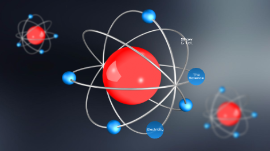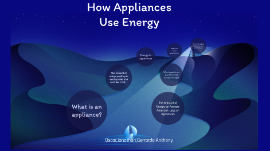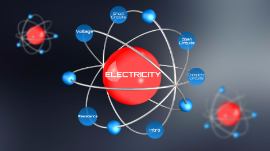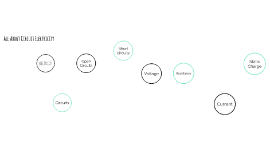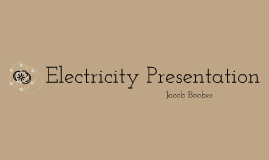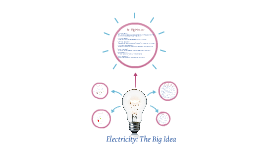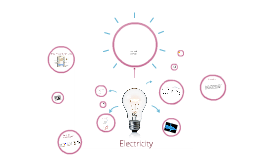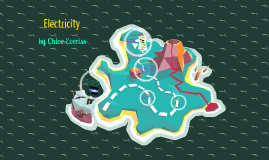Electricity presentation
Transcript: Series Circuit * Charges that are different attract each other. *Charges that are the same repel each other. *Friction, conduction, by induction, and by polarization are four methods where changes can redistribute themselves. * Electric currents are produced by electric charges flowing through a material such as wires. * Electrons in insulators are pack tightly so they can not move freely. However in conductors electrons can move around freely. *Energy of charges, and properties of an object can affect current flow. * Current, voltage, and resistance in a circuit are always related. *Basic features electrical circuits have: devices that run by electrical energy, sources of electrical energy, and conducting wires. The Big Picture Parallel Circuit: a closed circuit in which the current divides into two or more paths before recombining to complete the circuit. For example, if one light bulbs goes out the other one stays intact. Electricity: The Big Idea VOCAB TERMS How do charges interact? A:Two objects that are similarly charged will repel, while two objects with opposite charges will attract. Moreover, a neutral object will attract either charges. How do charges build up? A: Atoms and electrons start to build up until there is an excess of electrons. How is electric current made? A:Current is produced in any circuit when an Electromotive Force is connected to a closed circuit. How do conductor differ from insulators? A: Conductors are materials that conduct heat well, while insulators don't conduct heat well. What affects current flow? A: Resistor affect the current through a circuit that's supplied with a constant voltage. What did Ohm discover? A: Resistance in an object is equal to voltage divided by current. What is a current made of? A: It is made out of small particles, smaller than atoms called electrons. Parallel Circuit Electric Charges, Currents, and Circuits Series Circuit Series Circuit: a circuit having its parts connected serially. For example, if one light bulb goes out the other one follows. electric force- force between charged objects. static electricity- the build up of charges on an object. friction- the rubbing of two objects. conduction- heat transfer from one particle of matter to another. polarization- electrons that are attract or repel to an external electric field. conductor- a material that conduct heat well. insulator- a material that does not conduct heat well. voltage- difference in electric potential energy per charge. resistance- measure of how difficult it is for charges to flow through an object. Ohm's Law- resistance in an object is equal to voltage divided by current. series circuit-all parts of an electric current that are connect one after another in one path. parallel circuit- different parts of a circuit that are on separate branches. Parallel Circuit






